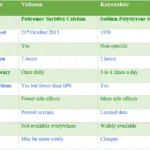The FDA on 19th May 2023 approved a novel biological drug by the name of Epkinly. Epkinly is the trademark of Genmab A/S US.
Epkinly is the brand name of a novel drug called Epcoritamab-bysp. This is a biological medicine that targets CD3 and CD20-positive cells, hence the name “bi-specific CD-20 directed CD-3 cell engager” [Ref].
Epkinly binds to CD-3 positive cells. The activated T-cells release pro-inflammatory cytokines that target B-cells, inducing B-cell apoptosis.
Epkinly (Epcoritamab-bysp) Indications:
The FDA approved Epkinly for the treatment of:
- Diffuse large B cell lymphoma, which is not specified,d and those cases where DLBL is arising from Indolent Lymphoma.
- High-grade B-cell lymphoma
Epkinly dosing schedule:
It is given as a subcutaneous injection. The first two doses are administered in a dose of 0.16 and 0.8 mg on days 1 and 8, followed by the usual recommended dose of 48 mg according to the FDA-provided schedule.
| Cycle of treatment (28 days) | Day of treatment | Dose of EPKINLY (mg) |
| Cycle 1 | 1 | 0.16 |
| 8 | 0.8 | |
| 15 | 48 | |
| 22 | 48 | |
| Cycles 2 and 3 | 1 | 48 |
| 8 | 48 | |
| 15 | 48 | |
| 22 | 48 | |
| Cycles 4 to 9 | 1 | 48 |
| 15 | 48 | |
| Cycle 10 and beyond | 1 | 48 |
Patients receiving Epkinly should be premedicated according to the following schedule:
Cycle | Medicines | Administration |
| Cycle 1 (All patients) | Prednisolone 100 mg or Dexamethasone 15 mg | 30 minutes to 2 hours before each weekly dose |
| Diphenhydramine 50 mg | ||
| Acetaminophen 650 to 1000 mg | ||
| Cycle 2 (Patients who experienced grade 2 or 3 CRS during the first cycle) | Prednisolone 100 mg or Dexamethasone 15 mg |
In addition, all patients should receive PCP and herpes prophylaxis prior to and during the treatment to prevent Pneumocystis pneumonia and Herpes zoster reactivation.
Contraindications to Epcoritamab-bysp:
The manufacturer lists none.
Side effects of Epkinly (Epcoritamab-bysp):
CRS (Cytokine-release syndrome):
EPKINLY can cause CRS, with a 51% occurrence in a clinical trial. Most CRS events happened in Cycle 1, particularly after the 48 mg dose on Day 15. CRS onset was typically within 24 hours and resolved in 98% of patients within 2 days.
Symptoms included fever, low blood pressure, breathing difficulties, chills, and rapid heartbeat. Neurological adverse reactions were rare.
EPKINLY should be taken following the prescribed dosing schedule with premedications to reduce CRS risk.
Prompt evaluation and management are necessary for CRS symptoms, and affected patients should avoid driving or operating heavy machinery.
ICAN (Immune Effector Cell-Associated Neurotoxicity Syndrome):
EPKINLY carries a risk of life-threatening immune effector cell-associated neurotoxicity syndrome (ICANS). In a clinical trial, 6% of patients experienced ICANS, with varying severity grades and one fatal case.
Most ICANS events occurred within the first treatment cycle, with an onset time of 16.5 days. Symptoms included confusion, lethargy, tremors, speech difficulties, and seizures.
Prompt evaluation and supportive care are necessary, and EPKINLY may need to be withheld or discontinued.
Patients should be monitored for ICANS and advised against driving or operating machinery if experiencing cognitive impairment.
Infections:
EPKINLY carries a risk of severe and fatal infections. In the clinical trial, 15% of patients experienced severe infections, with 1.3% resulting in death.
Common infections included sepsis, COVID-19, urinary tract infection, pneumonia, and upper respiratory tract infection. Close monitoring, appropriate treatment, and prophylaxis are necessary.
EPKINLY should not be used in patients with active infections. Treatment continuation depends on infection severity.
Cytopenias:
EPKINLY can cause serious cytopenias, including neutropenia, anemia, and thrombocytopenia. In the clinical trial, 32% of patients had decreased neutrophil levels, 12% had decreased hemoglobin, and 12% had decreased platelet counts.
Febrile neutropenia occurred in 2.5% of patients. Regular blood count monitoring is crucial, and treatment adjustments may be necessary based on the severity of cytopenias. Granulocyte colony-stimulating factors may be considered for prophylaxis.
Fetal toxicity:
EPKINLY can harm a developing fetus during pregnancy. Pregnant women should be aware of the potential risk.
Females capable of becoming pregnant should use effective contraception during and for 4 months after taking EPKINLY.
Other common side effects (>10% of the study patients in the clinical trial):
| Adverse Reaction | EPKINLY (N=157) | All Grades (%) | Grade 3 or 4 (%) |
| Immune system disorders | Cytokine release syndrome | 51 | 2.5 |
| General disorders and administration site conditions | Fatigue | 29 | 2.5 |
| Injection site reactions | 27 | 0 | |
| Pyrexia | 24 | 0 | |
| Edema | 14 | 1.9 | |
| Musculoskeletal and connective tissue disorders | Musculoskeletal pain | 28 | 1.3 |
| Gastrointestinal disorders | Abdominal pain | 23 | 1.9 |
| Diarrhea | 20 | 0 | |
| Nausea | 20 | 1.3 | |
| Vomiting | 12 | 0.6 | |
| Skin and subcutaneous disorders | Rash | 15 | 0.6 |
| Nervous system disorder | Headache | 13 | 0.6 |
| Metabolism and nutrition disorders | Decreased appetite | 12 | 0.6 |
| Cardiac disorders | Cardiac arrhythmias | 10 | 0.6 |
Laboratory abnormalities are seen with Epkinly:
Laboratory Abnormality | All Grades (%) | Grade 3 or 4 (%) |
| Lymphocytopenia | 87 | 77 |
| Anemia | 62 | 12 |
| Leukopenia | 53 | 22 |
| Neutropenia | 50 | 32 |
| Thrombocytopenia | 48 | 12 |
| Hyponatremia | 56 | 2.6 |
| Hypophosphatemia | 56 | N/A |
| ↑AST | 48 | 4.6 |
| ↑ALT | 45 | 5.3 |
| Hypokalemia | 34 | 5.3 |
| Hypomagnesemia | 31 | 0 |
| ↑Creatininie | 24 | 3.3 |
EPKINLY (epcoritamab-bysp) injection MOA (Mechanism of Action):
Epcoritamab-bysp is a type of medication called a bispecific antibody. It works by binding to two different proteins on different types of cells. One protein is called CD3, which is found on T-cells (a type of immune cell).
The other protein is called CD20, which is found on the surface of lymphoma cells (a type of cancerous B-cell) as well as normal B-cells.
In laboratory tests, epcoritamab-bysp was shown to activate T-cells, which means it made them more active and responsive.
It also causes the release of proinflammatory cytokines, which are substances that help the immune system fight infections and diseases.
Additionally, epcoritamab-bysp induced the destruction of B-cells, including lymphoma cells, through cell lysis.
Overall, epcoritamab-bysp is designed to engage T-cells and direct their activity toward targeting and eliminating lymphoma cells while sparing healthy B-lineage cells.
It has a half-life of 22 days and is eliminated from the body by proteolytic degradation.





